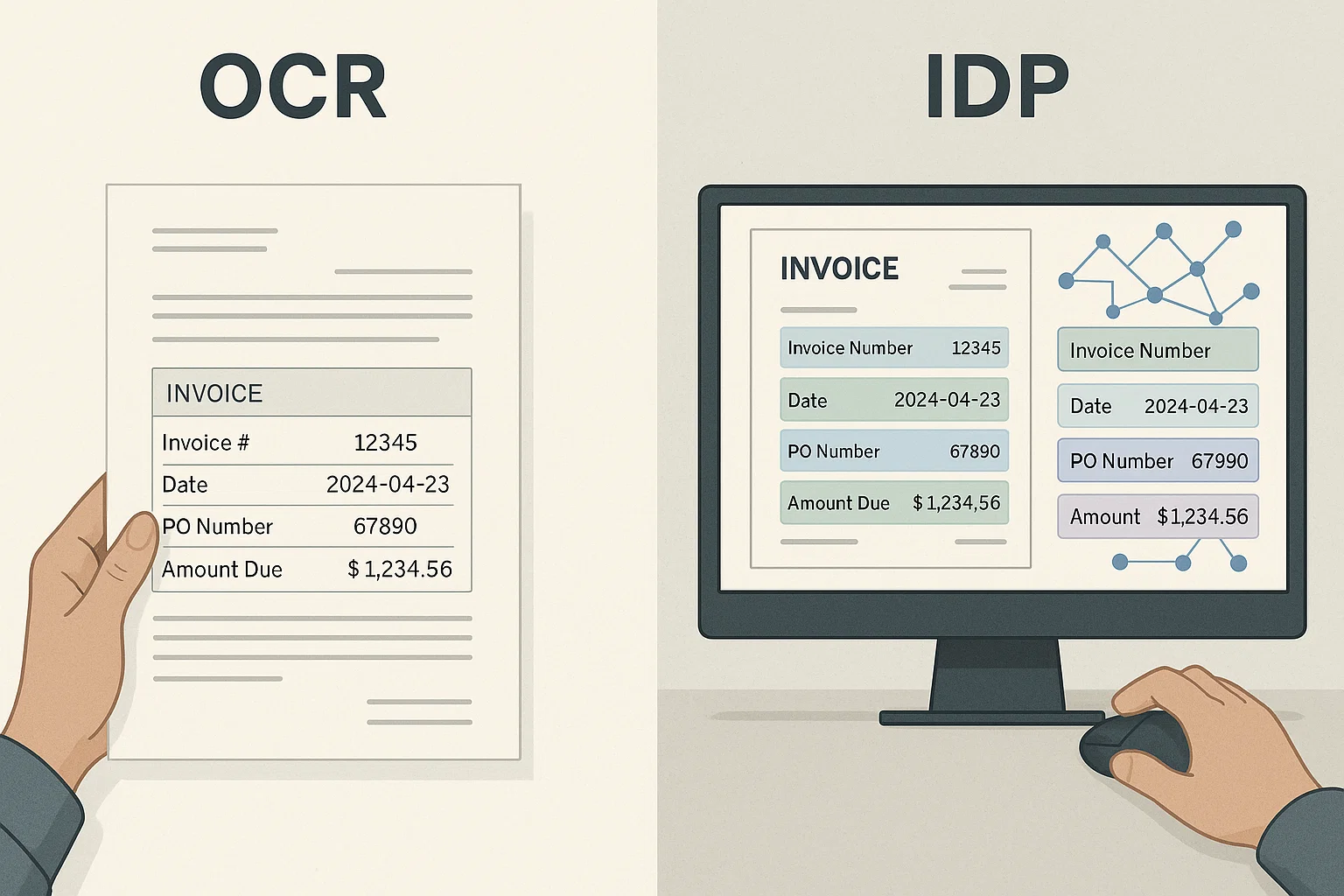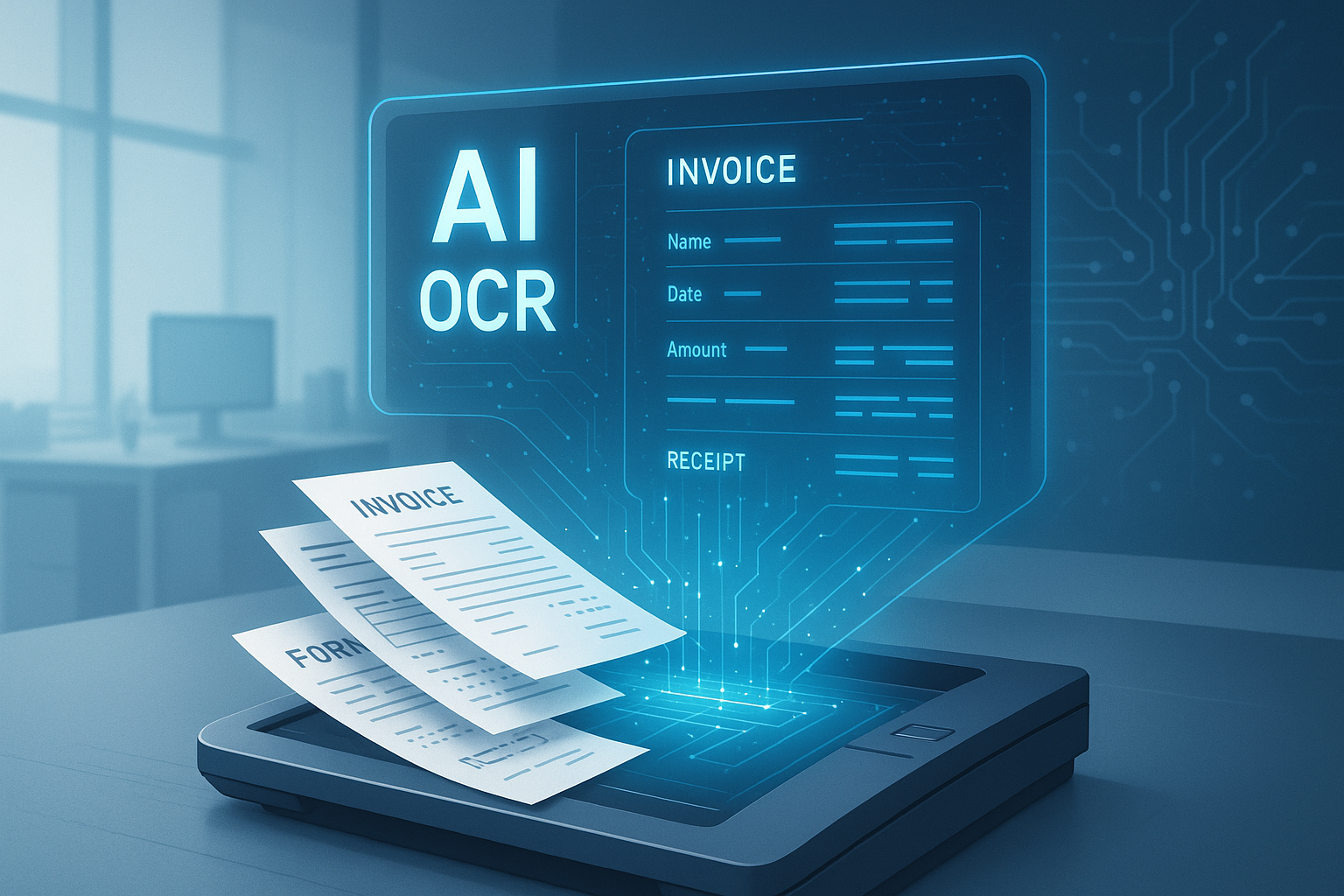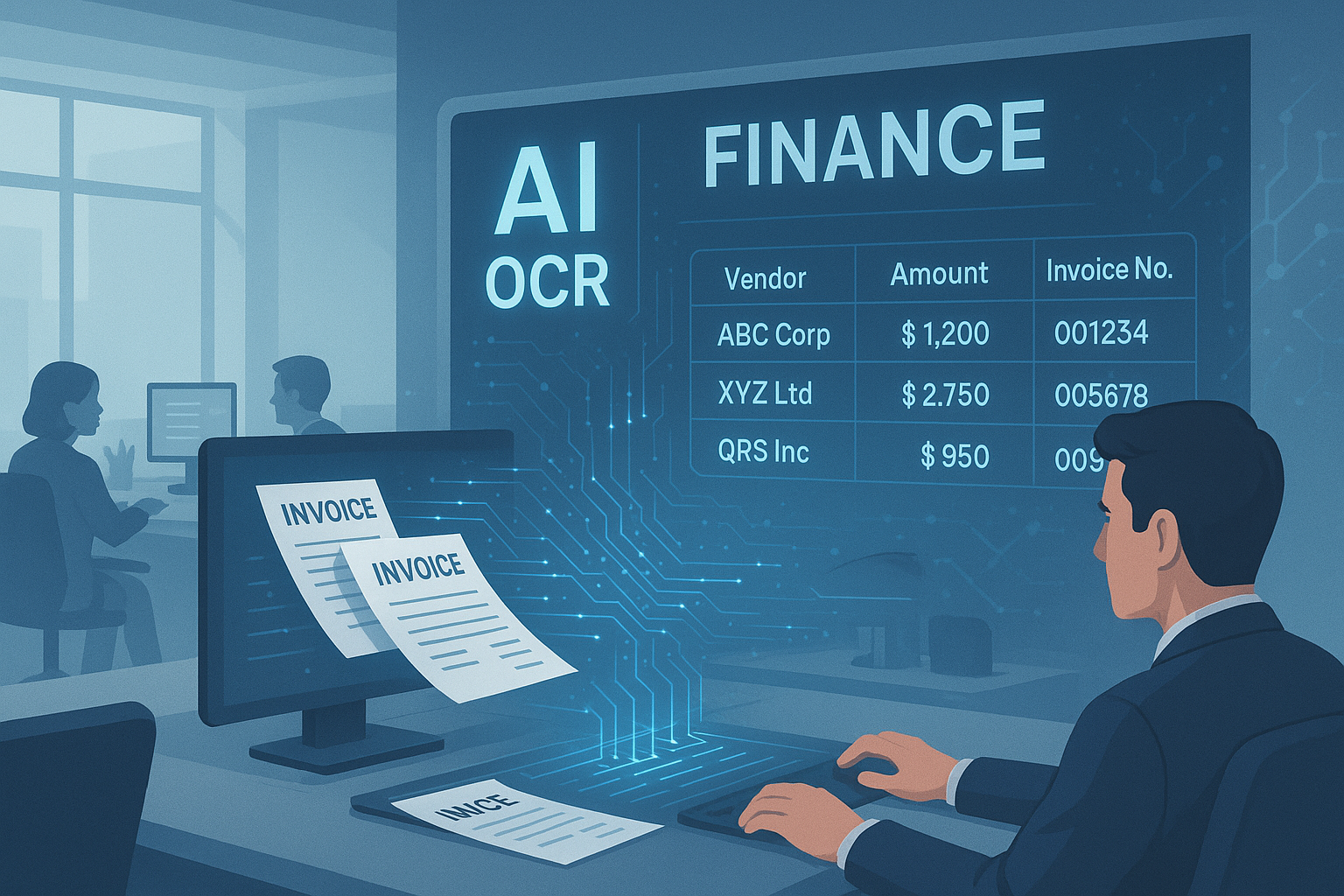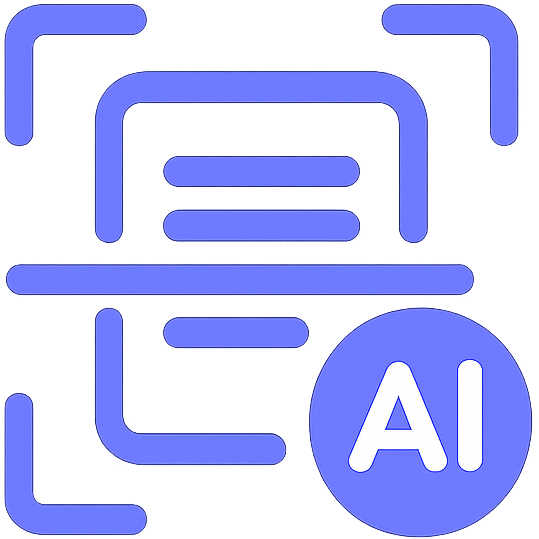IDP vs OCR: Understanding the Key Differences for Automation Success
Discover the crucial differences between IDP vs OCR technologies and learn how each can transform your document processing workflows for maximum efficiency.

Table of contents
In today's digital transformation landscape, organizations are constantly seeking ways to automate document processing and extract valuable data from their paperwork. Two technologies often mentioned in this context are Optical Character Recognition (OCR) and Intelligent Document Processing (IDP). While they might seem similar at first glance, understanding the differences between IDP vs OCR is crucial for implementing the right solution for your specific needs.
What is OCR Technology?
Optical Character Recognition, commonly known as OCR, is a technology that converts different types of documents—such as scanned paper documents, PDF files, or images—into editable and searchable data. At its core, OCR identifies text within a digital image and transforms it into machine-encoded text.
Traditional OCR technology works by analyzing the patterns of light and dark that make up individual characters. It then converts these patterns into digital text that computers can process, edit, and store. This technology has been around for decades and has continually improved over time.
Core Capabilities of OCR
The primary function of OCR is relatively straightforward:
- Recognizing characters from images or scanned documents
- Converting those characters into machine-readable text
- Enabling text search within documents
- Facilitating basic data extraction
While OCR is powerful for digitizing text, it has limitations when dealing with complex document formats or when context and meaning need to be extracted from the text.
What is IDP Technology?
Intelligent Document Processing (IDP) represents the evolution of document processing technology. IDP builds upon OCR capabilities but incorporates advanced technologies like artificial intelligence (AI), machine learning (ML), and natural language processing (NLP) to not just recognize text, but understand it.
IDP solutions are designed to handle the entire document processing workflow—from ingestion and classification to data extraction, validation, and integration with downstream systems.
Advanced Capabilities of IDP
IDP goes several steps beyond basic OCR with capabilities such as:
- Automatic document classification and sorting
- Contextual understanding of extracted information
- Handling of structured, semi-structured, and unstructured documents
- Intelligent data extraction based on document context
- Continuous learning and improvement through AI/ML
- Validation and verification of extracted data
These advanced capabilities make IDP particularly valuable for complex document processing scenarios where understanding context and relationships between data points is essential.
Key Differences: OCR vs IDP
When comparing OCR vs IDP, several fundamental differences emerge that impact their application and effectiveness:
1. Scope and Purpose
OCR is primarily focused on character recognition and text conversion. Its main goal is to digitize text from images. IDP, on the other hand, aims to understand and process entire documents, extracting meaningful data and insights while automating document-centric workflows.
2. Technology Stack
Traditional OCR relies on pattern recognition algorithms to identify characters. Modern IDP solutions incorporate OCR as just one component within a broader technology stack that includes AI, ML, computer vision, and NLP to enable more sophisticated processing.
3. Handling Document Complexity
OCR works best with clearly formatted, high-quality documents with standard layouts. IDP can handle documents with varying layouts, quality issues, and even handwritten text. It can adapt to different document types without requiring extensive reconfiguration.
4. Contextual Understanding
OCR simply identifies and extracts text without understanding its meaning or context. IDP can understand the relationships between data fields, recognize document context, and extract information based on semantic understanding rather than just position on a page.
When to Use OCR vs IDP
Choosing between OCR and IDP depends largely on your specific document processing needs:
OCR is Ideal For:
- Simple text digitization projects
- Converting printed documents to searchable text
- Basic data extraction from highly structured forms
- Scenarios where documents follow consistent formats
- Projects with limited budget and straightforward requirements
IDP is Better Suited For:
- Complex document processing workflows
- Handling diverse document types and formats
- Extracting data from semi-structured or unstructured documents
- Applications requiring contextual understanding
- High-volume document processing operations
- Scenarios requiring continuous improvement and learning
Real-World Applications
Understanding how these technologies apply in practical scenarios can help clarify their differences:
OCR Applications
OCR automation is commonly used for:
- Digitizing printed books and historical documents
- Converting scanned invoices to searchable PDFs
- Basic data entry automation for standardized forms
- Creating searchable archives of printed materials
IDP Applications
IDP extends automation capabilities to more complex scenarios:
- Automated invoice processing with line-item extraction
- Insurance claims processing and validation
- Mortgage and loan document processing
- Customer onboarding with ID verification
- Contract analysis and data extraction
The Future: OCR and IDP Working Together
Rather than viewing OCR vs IDP as competing technologies, forward-thinking organizations recognize that they represent different points on the document processing evolution spectrum. OCR serves as a foundational technology upon which more advanced IDP capabilities are built.
Many modern document processing solutions incorporate both technologies, using OCR for the initial text recognition and IDP's advanced capabilities for understanding and processing that text in context.
Conclusion
When evaluating OCR vs IDP for your document processing needs, consider the complexity of your documents, the volume of processing required, and the level of understanding needed to extract valuable data. OCR remains valuable for straightforward text digitization, while IDP offers more comprehensive capabilities for complex document processing scenarios.
As organizations continue their digital transformation journeys, understanding these technologies and their appropriate applications will be crucial for implementing effective document automation strategies. By selecting the right technology for your specific needs, you can streamline workflows, reduce manual processing, and unlock the value hidden in your documents.
Related Blog Posts

Revolutionizing Document Management with OCR Technology
Explore how AI-powered OCR technology transforms document management by digitizing text, streamlining workflows, reducing errors, and boosting efficiency across industries.

Smarter Invoice Processing: The OCR Advantage for Finance Departments
Learn how OCR technology revolutionizes invoice processing for finance departments by automating data extraction from invoices, reducing costs, and boosting accuracy. This guide covers OCR's benefits, AI enhancements, and practical steps to transform accounts payable operations

OCR APIs: The Secret Weapon Smart Finance Teams Are Using Right Now
Discover how OCR APIs transform finance teams by automating data entry from receipts and invoices, cutting processing time by up to 85%, and boosting accuracy to 98%. This guide shares real-world insights for modernizing financial workflows.
Ready to Transform Your Lending Process?
See how DocsAPI's AI-powered industry classification can help you process loans faster, improve accuracy, and scale your operations.
